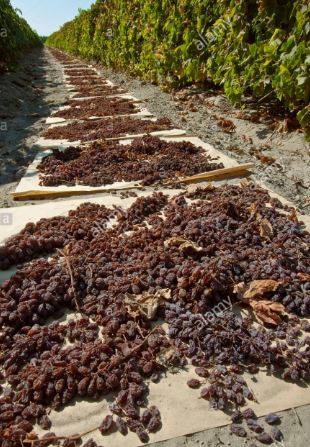By Bob Golden
Between 120-900 BC, the Phoenicians started colonial vineyards in the areas of Malaga and Valencia (Spain), and in Corinth (Greece). About this same time, the Armenians founded their vineyards in Persia (Turkey, Iran, Iraq). These bountiful growing areas had the perfect climate for making raisins and were also close to Greece and Rome, the first markets for raisins. Muscat raisins, oversized with seeds and a fruity full flavor, were the primary crop in Malaga and Valencia. Currants, tiny seedless, tangy raisins were planted in Corinth, Greece, where historians believe they got their name.
On approximately 200,000 acres, the 2,000 California Raisin growers produce 100% of the U.S. raisins, totaling approximately 300,000 tons annually in an area within a 60 mile radius of Fresno, California – known as the central San Joaquin Valley.
Two-thirds of the U.S. raisin production is consumed in the U.S. and Canada, while one-third is exported to nearly 50 countries with Japan and the United Kingdom being the top two export markets.1873 – Legend says California’s first raisin crop was grown by nature, not farmers. A massive heat wave hit the valley before harvest, and most of the grapes dried on the vine before farmers could pick them. (Climate change? 🙂 Late 1800s – Armenians descended from the first founders of vineyards in Persia began settling in the San Joaquin Valley. The area now supplies raisins for nearly half the world, making it the largest producer anywhere.
Wooden raisin trays were used for many years. The grapes are picked, placed on the trays and left in the sun to dry. The trays need to be turned over by hand, so that the grapes dry evenly. Paper trays are used today, but it is still a labor intensive process.
(Information sourced from Calraisins.org)







